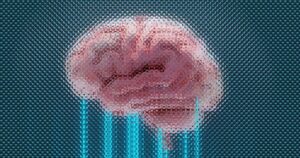
How NeuroEncoding Helped Joseph McClendon III Rewire His Identity and Inspire Millions
Cover Image Source In every person’s story, there’s a moment, a line drawn in the sand, that separates “before” from “after.” For Joseph McClendon III, that moment came at rock bottom. He was homeless, traumatized, and on the verge of giving up. And yet, from that dark place, he chose to rewire his story instead of letting it define him. Today, Joseph is known across the world as a performance coach, motivational speaker, and the founder of the NeuroEncoding Institute. But his success isn’t just built on stage charisma or self-help platitudes. It’s rooted in neuroscience, psychology, and one unshakable belief: we are not our programming. And we have the power to change it. Who Is Joseph McClendon III? Before the bestselling books and stadium-packed seminars, Joseph was a young man battling trauma that left deep emotional scars. After surviving a violent racial attack and facing homelessness, he was consumed by fear and shame. He describes the version of himself back then as “hiding in plain sight”, intelligent and capable, but completely disconnected from his self-worth. Everything changed when a stranger handed him a copy of Think and Grow Rich. That book wasn’t just information, it was a lifeline. It taught him that the mind could be trained. Those thoughts weren’t facts. And most importantly, that the story running in your head wasn’t permanent. Fueled by this awakening, Joseph studied psychology, neuroscience, and human behavior. He went on to become one of the most sought-after performance specialists in the world, working for decades alongside Tony Robbins, coaching elite performers, and eventually founding the NeuroEncoding Institute, a place dedicated to helping people rewrite the mental patterns that limit them. A Life Rewritten: Joseph’s Turning Point Joseph didn’t just heal; he studied how healing works. He realized that many people are running outdated “programs” in their minds: old narratives rooted in pain, shame, or fear. These narratives, often invisible, are the silent forces behind why we self-sabotage, stay small, or settle. He began experimenting with methods to not just understand these patterns, but to interrupt and replace them. His journey wasn’t about becoming someone new; it was about returning to who he really was, beneath the programming. That’s where NeuroEncoding was born. What Is NeuroEncoding? NeuroEncoding is a brain-training system that uses the science of neuroplasticity, the brain’s ability to rewire itself, to help people replace disempowering thoughts with empowering ones. It relies on a few key methods: Unlike many self-help techniques, NeuroEncoding isn’t about affirmations or positivity alone. It’s a structured approach grounded in the understanding that our nervous system, beliefs, and behaviors are all programmable and reprogrammable. Identity Transformation Through Neuroscience Joseph’s core message is this: Your identity isn’t fixed, it’s encoded. That means we can decode the limiting beliefs and re-encode the ones that serve us. Let’s say you’ve always believed you “screw things up.” That’s not just a thought, it’s a belief. And your brain collects evidence to prove it true. Every time you hesitate, procrastinate, or fail,





